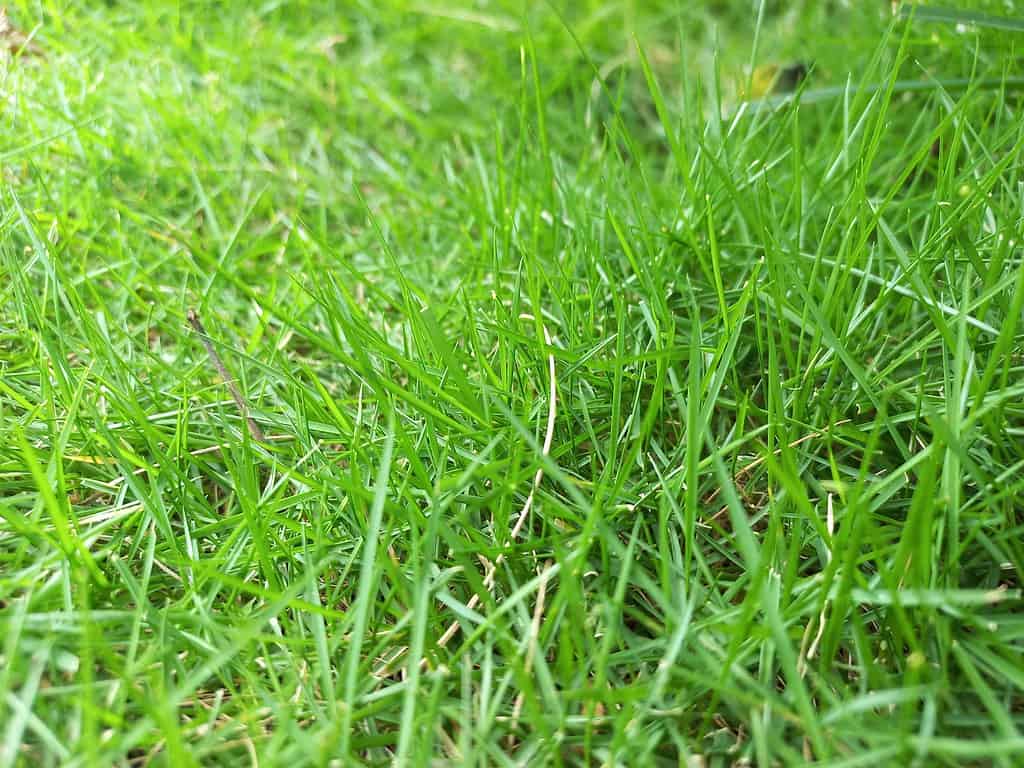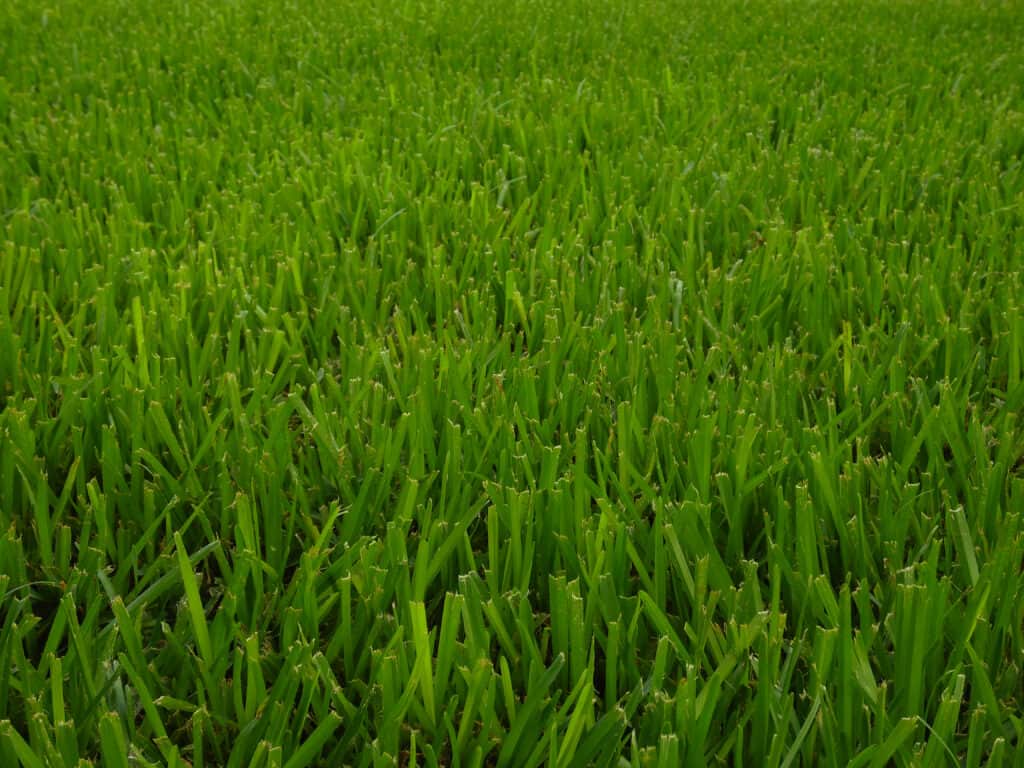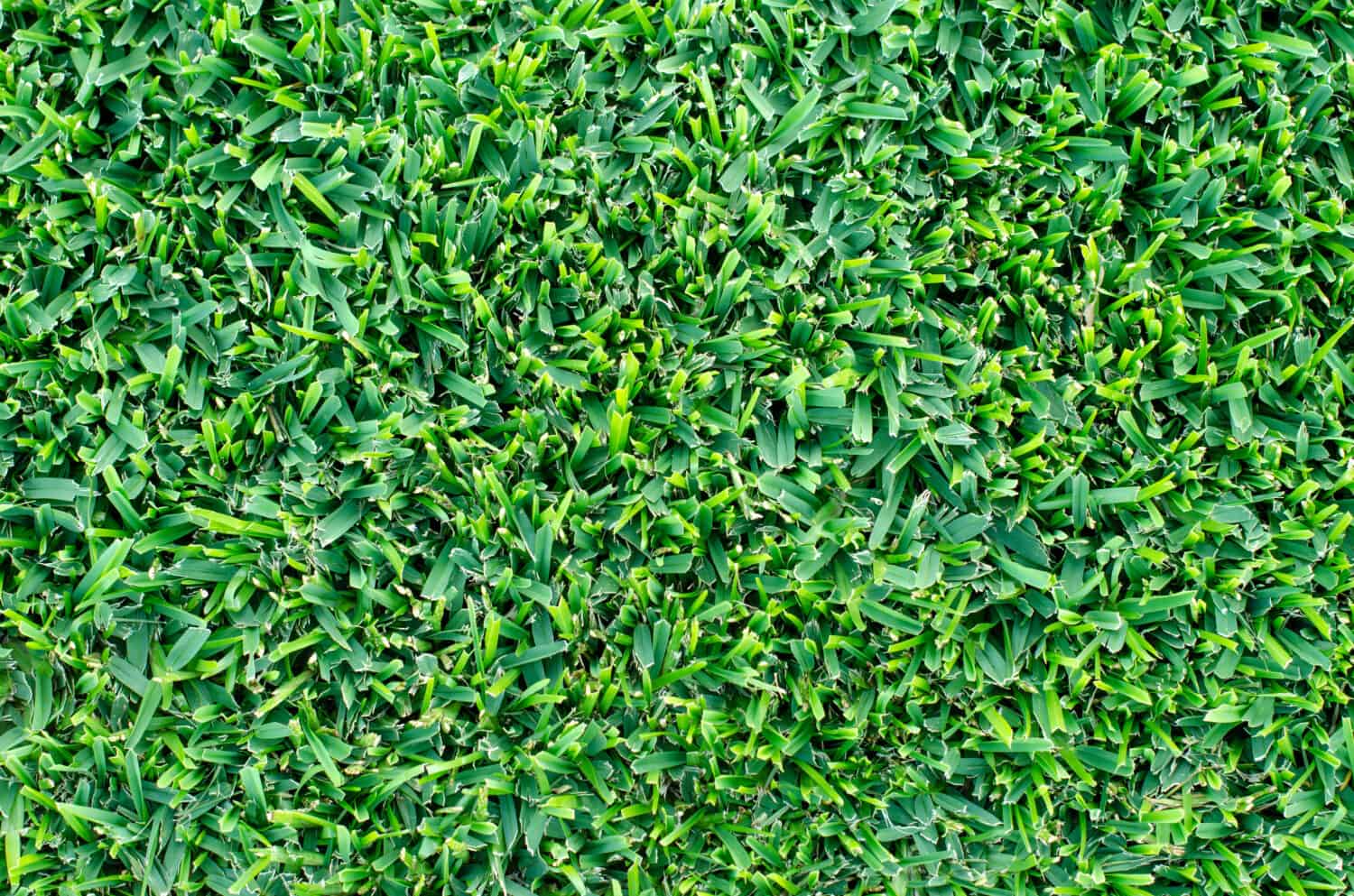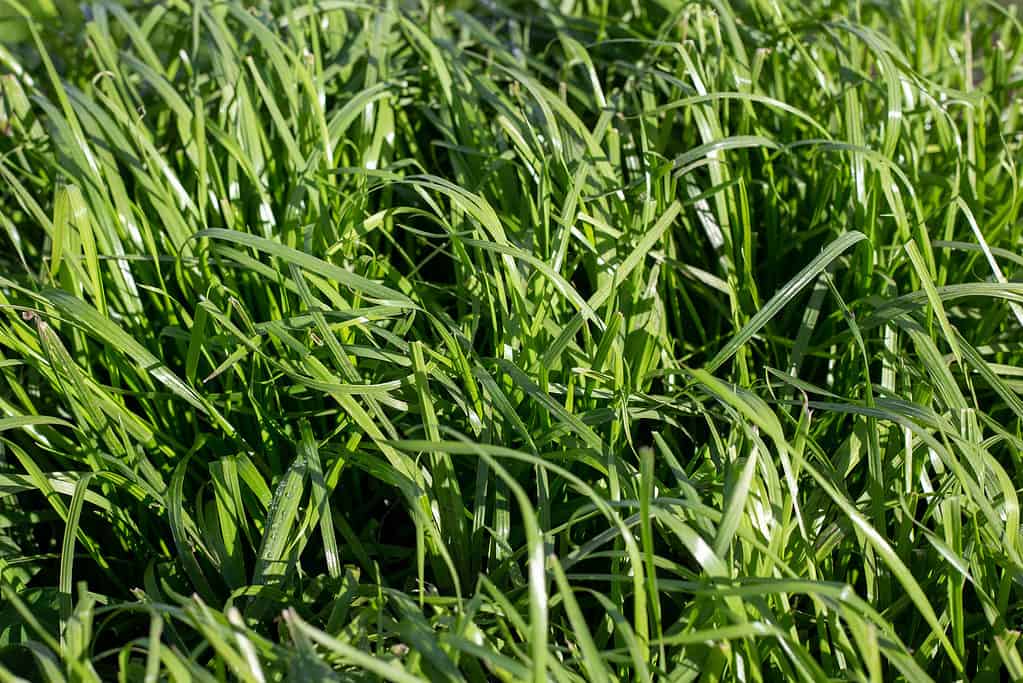Revamping your Texas yard with a lush lawn? Well, you’re in luck! Texas offers a perfect home for various beautiful grass types. There are grass types for every type of Texas yard. Have your pick from cool-season grasses thriving in the northern panhandle to warm-season grasses flourishing in the hot southern areas.
Let’s dive into some of the most suitable and stunning grass types to turn your Texas yard into a charming green oasis. So whether you’re a lawn care enthusiast or a first-time homeowner, this guide will help you choose the perfect grass type for your Texas yard!
Texas Climate
Notorious for its prolonged and blistering summers, Texas often sees temperatures surging beyond 100°F. Such heat can rapidly sap the moisture from lawns, posing a challenge to keep the grass vibrant and green.
Besides, the state has different hardiness zones. And it’s crucial to select the right grass according to the zone for perfect results.
| USDA Plant Cold Hardiness Zones for Texas | Lowest Temperature (°Fahrenheit) |
|---|---|
| 6a | Between -10 and -5°F |
| 6b | Ranging from -5 to 0°F |
| 7a | From 0 to 5°F |
| 7b | Between 5 and 10°F |
| 8a | From 10 to 15°F |
| 8b | Ranging from 15 to 20°F |
| 9a | Between 20 and 25°F |
| 9b | From 25 to 30°F |
On top of high heat, Texas also undergoes spans of dry spells that can persist for weeks, even months. Under such conditions, it becomes imperative to opt for grass species that can withstand drought and need less watering.
It’s vital to remember to select a grass type that’s suited to your specific soil condition. Some grasses are more tolerant of alkaline soils than others, making it essential to do your homework before planting.
Fertilization is another key aspect of maintaining nutrient-rich soil. Given that many parts of Texas lack nutrient-dense soil, fertilizer can help restore the vital nutrients your lawn needs. It’s crucial, however, not to over-fertilize, as this could lead to issues like excessive growth or even root damage.
All things considered, the climate and growth conditions of Texas may present unique hurdles for lawn maintenance. But with informed choices and the selection of the right grass types, Texans can maintain attractive lawns all year round.
The 7 Beautiful Grass Types Perfect for Texas Yards
So, without further ado, let’s jump in and get to know 7 of the beautiful grass types that are perfect for Texas yards.
1. Zoysia Grass

One of the most popular grass types in Texas is Zoysia grass.
©Belajar Ceria/Shutterstock.com
Zoysia grass holds a special place in the hearts of Texas homeowners, especially those living in hot, dry regions. Texas homeowners understand the necessity of having a lawn that is resilient to the state’s distinctive weather patterns. This is where Zoysia grass comes in, a high-performing grass type known for its superior appearance and texture.
Zoysia’s notable popularity in Texas’s arid zones is largely due to its exceptional ability to resist drought and weeds. Plus, this type of grass has decent shade tolerance. Homeowners have an array of options when it comes to Zoysia grass, including Zeon Zoysia and Palisade Zoysia. There’s a wide range of options to choose from, ensuring a verdant, plush lawn that invites barefoot enjoyment all year round.
A significant benefit of this slow-growing grass is its compact growth habit. This naturally deters weeds and eliminates the need for regular mowing. While Zoysia is robust enough to endure heavy footfall during torrid, dry periods, it’s vital to remember that it needs extensive watering immediately after it’s planted to guarantee a healthy start.
Zoysia grass doesn’t tolerate pooled water well and may wither in areas where water tends to accumulate. Even though symptoms like root rot can be easily spotted, other issues might not be so noticeable. Shallow rooting and increased disease vulnerability are a few potential complications that improper watering might trigger.
However, Zoysia grass exhibits excellent heat tolerance. It can handle temperatures of up to 120 degrees, which is particularly advantageous in the scorching Texas summers. It can handle prolonged exposure to sunlight without significant damage, making it suitable for sunny areas. Come winter, keep in mind that this type of grass tends to go dormant and turn brown.
2. St. Augustine Grass

St. Augustine grass is a great choice for shaded areas.
©Xeres Zales/Shutterstock.com
If your Texas home is situated among mature trees, St. Augustine grass might be the ideal choice for you. This grass species flourishes in areas that are fully shaded, making it a top pick for homeowners grappling with the challenge of sustaining a lawn under limited sunlight.
With its striking looks and refined texture, St. Augustine grass can bring class to any garden or backyard.
Don’t be misled by its shade-loving nature – St. Augustine grass can also deal with a variety of weather situations effortlessly. Unlike many grass types that rapidly enter a dormant phase in dry climates, this resilient variety maintains its lush green color even under drought-like circumstances.
Despite St. Augustine grass having a rougher texture than some alternatives, this feature actually serves to its benefit by hiding weeds and minor lawn imperfections.
However, before introducing this grass to your yard, remember that the soil pH should be kept within a specific window. Ideally, make sure the pH is between 5.0 and 8.5 for the best growth. Furthermore, maintenance activities like dethatching need to be carried out yearly.
St. Augustine grass has moderate water requirements and performs best when adequately irrigated. Furthermore, this grass isn’t resistant to cold weather and is best suited to areas with mild winters. Besides, this grass needs an extra dose of fertilizers during the initial three months. This makes it a bit more demanding than your typical, low-maintenance sod.
3. Centipede Grass

Centipede
grass is suitable for hot climates.
©Sherry Barr Photography/Shutterstock.com
For the inhabitants of eastern Texas who are on the hunt for an easy-to-care-for grass variety that flourishes in partially shaded conditions, Centipede grass is the way to go.
Centipede grass sports a texture that ranges from medium to coarse. And this grass type is perfectly suited to hot climates and doesn’t ask for an abundance of nutrients. However, due to its relatively shallow root system, it is sensitive to alkaline soil and is not the best at withstanding heavy footfall or long spells of drought.
Nevertheless, for those capable of providing suitable growth conditions, Centipede grass can offer a rich and weed-resistant element to any lawn. This type of grass is not particularly fond of cold weather. But this slow-growing grass can endure many a winter when cultivated in the warmer parts of Texas.
Centipede grass is a top pick for homeowners throughout the state owing to its adaptability to diverse climates. This grass is also known for its slow growth habit, which means it requires less frequent mowing compared to some other grass types. With its modest maintenance demands, it’s no surprise that a vast number of Texans opt for this grass type when looking to maintain appealing yet easy-to-manage lawns.
Centipede grass isn’t partial to excessive fertilization. An abundance of nitrogen supplied to the lawn prior to its greening phase can cause an unwelcome surge in plant growth. Additional causes for its decline might include high phosphorus levels, a dense layer of thatch, compacted soils, and a pH level exceeding 6.0.
4. Buffalo Grass

Buffalo
grass is drought resilient.
©doublelee/Shutterstock.com
For Texas homeowners contending with dry climates, Buffalo grass could be a game-changing choice.
This grass thrives best in arid regions, with an optimal annual rainfall limit of 25 inches. In wetter environments, it often battles weed encroachment. Over-irrigation can also invite undesired pests, underlining the importance of maintaining a proper watering balance.
Although Buffalo grass is generally low-maintenance, it does require ample daily sunlight to flourish and keep up its visual appeal. However, for those residing in the warmer regions of Texas, this tough grass type is more than capable of standing up to the task – even managing the most parched conditions effortlessly.
Buffalo grass is famed for its exceptional resilience to drought and versatility across various soil types. It’s hardly surprising, then, that numerous Texans opt for this sturdy variety when in search of a handsome yet easy-to-manage lawn solution. However, during extended dry spells, supplemental watering may be necessary to maintain its health and appearance. And even though it’s not the best at handling shade, its capacity to endure high temperatures makes it a suitable pick for many homeowners throughout the state.
However, Buffalo grass does have its drawbacks. As a warm-season grass, it doesn’t keep its appealing appearance during the chillier months of the year. Furthermore, this grass type struggles in the eastern regions of Texas, particularly in areas where the annual rainfall surpasses 30 inches.
5. Bermuda Grass

Bermuda is one of the most popular grass types in Texas.
©pyzata/Shutterstock.com
Among the top grass varieties found in Texas, Bermuda is a clear favorite. This popularity arises from its adaptability to the wide range of climates throughout Texas. While this grass can adapt to most soil types, it particularly thrives in coarse, sandy environments.
Bermuda grass, a warm-season grass with a fine texture, spreads horizontally via rhizomes and stolons. Its exceptional drought resistance, durability, and versatility make it an excellent choice for various settings, including yards, sports fields, home lawns, and utility turf.
Bermuda grass is highly prized for its excellent tolerance to heavy foot traffic and rapid recovery potential. These qualities, coupled with its ability to withstand low mowing heights, make it an excellent choice for golf courses, sports fields, and any other high-traffic areas.
Regular Bermuda grass varieties usually have a coarse leaf texture and a light green hue. However, breeding efforts have enhanced the appearance of Bermuda grass, with many improved varieties now offering finer leaf textures, deeper colors, and increased density. Most of these improved varieties are planted from seeds, but some are also available as sod.
However, keep in mind that this turfgrass is known for its aggressive growth, both above and below ground, which can quickly overrun landscapes and flower beds. This rapid growth can also lead to thatch accumulation. Bermuda grass typically struggles to grow in cold conditions and shaded areas.
6. Seashore Paspalum
Seashore paspalum is another perfect type of grass for Texas yards. While it’s not very adaptable to low temperatures, it can handle higher salinity levels. It is recommended to seek professional advice from your lawn care service if you opt for this grass.
As its name suggests, seashore paspalum’s salinity resistance makes it one of the top contenders for one of the best grass types for coastal locales, but it’s also an excellent choice for inland properties.
Seashore paspalum is a warm-season turfgrass that expands laterally through rhizomes and stolons, bearing a striking resemblance to Bermuda grass in both appearance and performance. It’s typically found in areas where salinity poses a problem due to closeness to the coast or poor-quality groundwater.
When compared to Bermuda grass, it shows greater shade tolerance and has similar cold resistance. Its susceptibility to the cold confines its use mainly to the southernmost parts of the country, including South Texas.
There are many varieties of this grass available in Texas, ensuring there’s something to match everyone’s needs and preferences. Most of them can be grown from sod, and one variant can sprout from seeds.
However, be aware of its weaknesses: seashore paspalum struggles in cold climates and has a high disease potential.
7. Ryegrass

Ryegrass is a great pick for Northern Texas.
©Sheryl Watson/Shutterstock.com
Although snow and ice are less frequent in Northern Texas, locals still have to bear with a dull brown lawn during the colder months. That’s where Ryegrass comes to the rescue.
Often, people view ryegrass as “nurse” grass, mainly used to rehabilitate lawns. However, an increasing number of Texas homeowners are starting to appreciate the benefits of having perennial ryegrass as the main variety in their lawns.
So, what exactly is it? Ryegrass comes in both annual and perennial forms, with finer blades than some traditional grass seeds. Originally from Europe and Asia, perennial ryegrass is a cool-season grass, implying it handles Texas’s cooler months better than some warm-season favorites. Ryegrass also sprouts much quicker, maturing in about 21 days.
Texas winters can be partly cloudy. Thus, even if your yard isn’t shaded by trees, your grass may still experience some level of shade. Ryegrass is more shade-tolerant than other varieties. Ryegrass also shows resilience as it can adjust to both acidic and alkaline soils, ranging from 5.5 to 7.5 on the pH scale.
Despite being a cool-season grass, ryegrass manages to withstand heat and drought reasonably well – a crucial trait for surviving Texas summers. However, with that said, ryegrass is not generally as heat and drought resistant as some of the other grass types on this list.
Unfortunately, ryegrass is known to harbor several species of bacteria and viruses that can negatively affect other plants and domestic animals. Maintaining ryegrass requires continuous effort to keep it attractive. It needs regular trimming, fertilization, and adherence to a strict planting schedule to thrive and stay healthy.
Summary of the Beautiful Grass Types Perfect for Texas Yards
| Grass Type | Why It’s Perfect |
|---|---|
| Zoysia Grass | Dense growth, handles heavy foot traffic, and is drought tolerant |
| St. Augustine Grass | Thrives in shaded areas and is heat tolerant |
| Centipede Grass | Coarse texture, drought tolerant, and low maintenance |
| Buffalo Grass | Low maintenance, drought tolerance, and adaptability to various soils |
| Bermuda Grass | Fine textured, extremely drought tolerant, and durable |
| Seashore Paspalum | Traffic and salinity tolerance |
| Ryegrass | Suitable for north Texas, fast-growing, and shade tolerant |
Thank you for reading! Have some feedback for us? Contact the AZ Animals editorial team.








